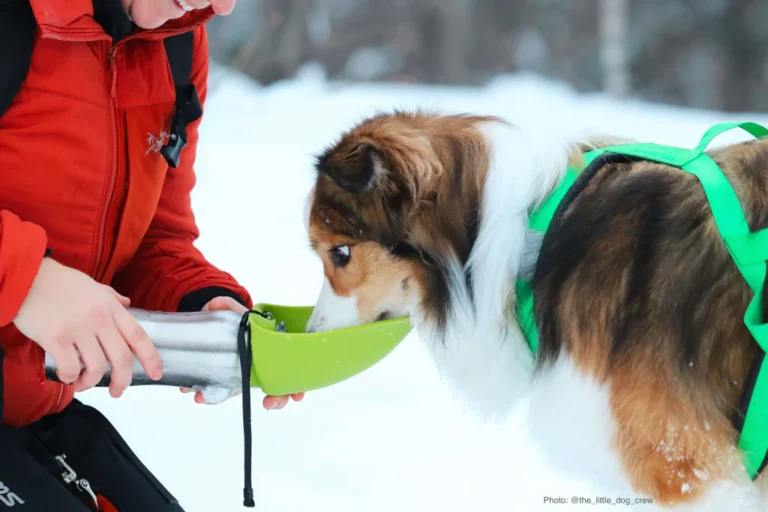Many pet owners are unaware of the important first aid steps that can save your dog’s life during an unexpected outdoor emergency. Whether your furry companion is injured by a sharp object or suffers from heatstroke, knowing how to respond quickly and effectively is vital for their well-being. This guide will help you understand the key first aid measures you should practice, ensuring you are prepared to handle any situation while enjoying the great outdoors with your canine friend.
Essential Equipment for Wilderness First Aid
Your dog’s safety depends significantly on having the right first aid equipment readily available while in the wild. Packing vitals can make all the difference in an emergency. Items that are lightweight, portable, and easy to access are priorities. A well-thought-out kit can ensure your furry friend receives timely care, minimizing the chances of injury escalation during your adventures together.
Must-Have Supplies for Pet First Aid Kits
Your pet first aid kit should include bandages, antiseptic wipes, gauze pads, and adhesive tape. Incorporating items such as tweezers for splinter removal, scissors for cutting bandages and muzzles to prevent biting during painful situations should also be standard. Keeping the kit compact and packed in a waterproof bag ensures you’re always prepared, no matter the weather conditions you face in the wild.
Tools Every Dog Owner Should Carry in the Wild
A few handy tools can significantly improve your ability to assist your dog in case of emergencies. A multi-tool that includes a knife, screwdriver, and pliers, along with a flashlight, can help you address various situations—from removing harmful debris to examining wounds. Additionally, consider a portable water bowl and dog-friendly electrolyte solution to keep your pup hydrated and energized.
Carrying specific tools can greatly enhance your preparedness while out with your dog. A reflective vest or bright collar not only increases visibility in low-light conditions but can also aid in attracting attention if you need assistance. Having a portable pet carrier or blanket can provide comfort to your dog if they’re injured but need relocation. Neck and shoulder straps can come in handy, allowing you to lift and carry your dog without further aggravating any injuries. Staying equipped with versatility and reliability ensures that you can handle unexpected situations with confidence.
Identifying and Responding to Common Injuries
Recognizing common injuries in your dog while out in the wild allows for quicker and more effective responses. From cuts and scrapes to fractures and allergic reactions, being able to identify symptoms enables you to act swiftly to provide relief and care. Understanding how to handle these issues can mean the difference between a minor incident and a more serious health concern, ensuring your dog’s safety during outdoor adventures.
Cuts, Scrapes, and Wounds: First Aid Techniques
For minor cuts, scrapes, or wounds, first clean the affected area with lukewarm water to remove dirt and debris. Afterward, apply a pet-safe antiseptic ointment to prevent infection. You may consider covering the wound with a sterile bandage if it is in a location that allows for it, but ensure it’s not too tight, as this might restrict blood flow. If the wound appears deep or doesn’t stop bleeding, seek veterinary assistance immediately.
Recognizing and Treating Allergic Reactions
Allergic reactions in dogs can arise from various sources, such as insect bites, certain plants, or food. Symptoms may include excessive itching, swelling, hives, vomiting, or difficulty breathing. Administering an antihistamine, approved by your veterinarian, can alleviate mild reactions. For severe symptoms, particularly respiratory difficulties or swelling around the face, seeking emergency veterinary care is crucial to avoid life-threatening conditions.
Allergic reactions can vary significantly in severity from one dog to another. Low-level responses, such as localized swelling or itching, may only need over-the-counter antihistamines like diphenhydramine, but you should always consult your vet about the correct dosage. Pay close attention to your dog’s behavior, as they might also display signs of distress or pain. Being aware of your dog’s allergies, if any, can further prevent such incidents from occurring, ensuring your wilderness outings remain enjoyable and safe.
Dealing with Emergencies: What to Do When Time is Critical
In emergencies, acting swiftly and effectively can be the difference between life and death for your dog. Always assess the situation first to ensure you and your pet are safe. Stay calm to think clearly, and if possible, call for help while providing initial care. Knowing how to tackle common scenarios, such as heatstroke or fractures, will prepare you to handle critical situations confidently. Your quick thinking and preparedness are vital in ensuring your dog receives the support they need until you can access professional veterinary assistance.
Handling Heatstroke and Hypothermia
Heatstroke occurs rapidly in dogs, especially during hot weather, exhibiting signs of excessive panting, drooling, and lethargy. Move your dog to a cool area immediately, offer water, and place cool, wet cloths on their body. Hypothermia can happen in cold environments, where your dog shivers, exhibits weakness, or becomes unresponsive. Wrap them in blankets and provide warmth, while ensuring they slowly regain a stable body temperature.
Signs of Fractures and How to Stabilize
Fractures can result from falls or accidents, manifesting through visible pain, limping, or an inability to use the affected limb. Look for swelling, abnormal positioning of the bone, or an open wound. Stabilizing the fracture is vital; use a makeshift splint with available materials, ensuring it’s tight enough to secure the area without restricting circulation, then transport your dog to a vet for proper care.
To stabilize a fracture, identify the broken limb and avoid unnecessary movement, as this could cause further damage. Support the limb using a sturdy material like a rolled-up magazine or sticks, padding it with cloth or gauze to protect the skin. Secure the splint with tape, bandages, or a strip of cloth, ensuring that it’s snug but not cutting off blood flow. Keep your dog calm and stationary until professional help is available, as this can significantly improve their chances of recovery.
The Importance of Training: Gaining Confidence in Emergencies
Training equips you with the knowledge and skills necessary to respond effectively in emergencies. By learning pet first aid, you gain confidence in tackling potential crises, which helps you maintain a calm demeanor when your dog needs you most. Additionally, understanding canine anatomy and behavior enhances your ability to assess situations quickly, enabling you to make informed decisions that can save your dog’s life. The more prepared you are, the less panicked you will feel, allowing you to focus on providing the best care possible.
Recommended First Aid Courses for Dog Owners
Enrolling in a certified first aid course specifically designed for pet owners can greatly enhance your preparedness. Look for programs offered by organizations such as the American Red Cross or PetTech, which cover a range of vital topics from basic canine CPR to wound management. These courses often include hands-on training, so you can practice techniques in a controlled environment with expert instructors guiding you.
Practicing Scenarios to Prepare for the Unexpected
Simulation of emergency situations prepares you and your dog for real-life encounters. By regularly practicing scenarios such as assessing injuries or performing CPR, you reinforce your knowledge while boosting your confidence. Involving friends or family members can create a safe platform to simulate various challenges, helping to enhance your problem-solving skills under pressure.
Engaging in scenario practice means you can identify your weaknesses and refine your techniques before an actual emergency occurs. Consider setting up mock situations where your dog might get injured, such as stepping on sharp objects or encountering wildlife. This not only tests your first aid skills but also strengthens your bond with your dog, as they become familiar with your cues and responses during stressful times. Each session can reveal areas for improvement, ensuring that you’re consistently ready to act when it counts most.
Building a Support Network: Who to Contact in a Crisis
Having a reliable support network can make all the difference when dealing with a pet emergency. Identify local veterinarians, emergency clinics, and animal poison control hotlines, and keep their contact information readily accessible. Additionally, engaging with fellow pet owners or dog training groups can provide you with valuable guidance and shared experiences. You may even discover local resources, like pet first aid classes, that further strengthen your ability to respond in a crisis.
Developing Relationships with Local Vets and Emergency Clinics
Establishing a rapport with local veterinarians and emergency clinics creates a support system you can rely on in times of need. Frequent visits for routine check-ups help you get acquainted with the staff, allowing them to become familiar with your dog’s medical history. In the event of an emergency, this established communication can streamline the process, ensuring your furry friend receives timely and effective care.
Utilizing Online Resources and Hotlines for Guidance
The digital age has made it easier to access vital information during a dog-related emergency. Numerous online platforms offer guidance on first aid procedures specifically designed for pets, and hotlines, including the ASPCA Animal Poison Control Center, can provide immediate support for poisonings or other urgent situations.
In particular, utilizing online resources can be a game-changer during stressful moments. Websites like PetMD or veterinarians’ social media accounts often feature real-time advice and updates on health concerns. Engaging in forums or communities dedicated to dogs allows you to ask questions and learn from the experiences of others. With hotlines available 24/7, you can connect directly with professionals who can guide you through urgent care steps, ensuring you’re prepared for any situation your dog may encounter in the wild.
Summing up
Upon reflecting, you should be well-prepared to handle emergencies with your dog while enjoying the wild. Familiarize yourself with basic first aid steps such as controlling bleeding, performing CPR, and recognizing signs of distress. Equipping your first aid kit with necessarys like bandages, antiseptics, and a muzzle can make a significant difference. Always assess the situation calmly and prioritize your dog’s safety. By understanding these key steps, you can ensure a safer outdoor adventure for both you and your canine companion.





